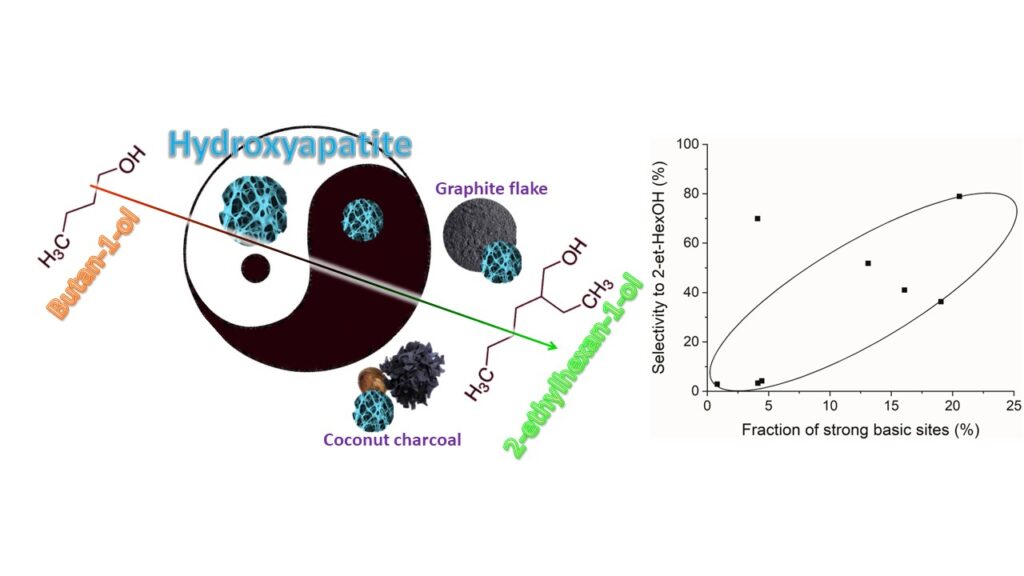Carbon-hydroxyapatite hybrid materials to synthesise green fuels precursors
|Plant dry matter raw materials (biomass) can be used as an alternative to petroleum refining. In this context 2-ethylhexan-1-ol (2-et-HexOH), a wide used chemical, is considered a promising candidate, and its precursor, butan-1-ol (ButOH), can be synthetised from acetone–butanol–ethanol fermentation using lignocellulosic biomass derived sugars as substrates.

Dr Olga Larina of L.V. Pisarzhevskii Institute of Physical Chemistry of the National Academy of Sciences of Ukraine investigated hybrid systems of hydroxyapatite (HAP, a mineral form of calcium apatite) supported on carbonaceous materials (CM) of different nature – such as activated charcoals, acetylene black, carbon black, graphite flake, synthesized microporous and mesoporous carbons – as catalysts for the for the condensation of butan-1-ol.
Exploiting FESEM and XPS techniques at the Charles University in Prague (CERIC Czech partner facility), and NMR Spectrometer Magic at the CERIC Slovenian partner facility, scientists could characterise the structure and morphology of HAP, CM, and the developed hybrid systems. Researchers demonstrated that HAP/CM systems exhibit catalytic activity in the ButOH condensation with carbon chain elongation, whereas the distribution of ButOH conversion products strongly depends on the nature of the CM.
In particular, they discovered that the surface’s strong basic sites are preferable for elongating the carbon chain: for HAP/graphite flake and HAP/activated coconut charcoal, the highest selectivity towards 2-ethylhexan-1-ol was about 75% and 57%, respectively. These findings could help to develop alternative, green fuels starting from carboneous biomass in a more efficient way.
ORIGINAL ARTICLE:



